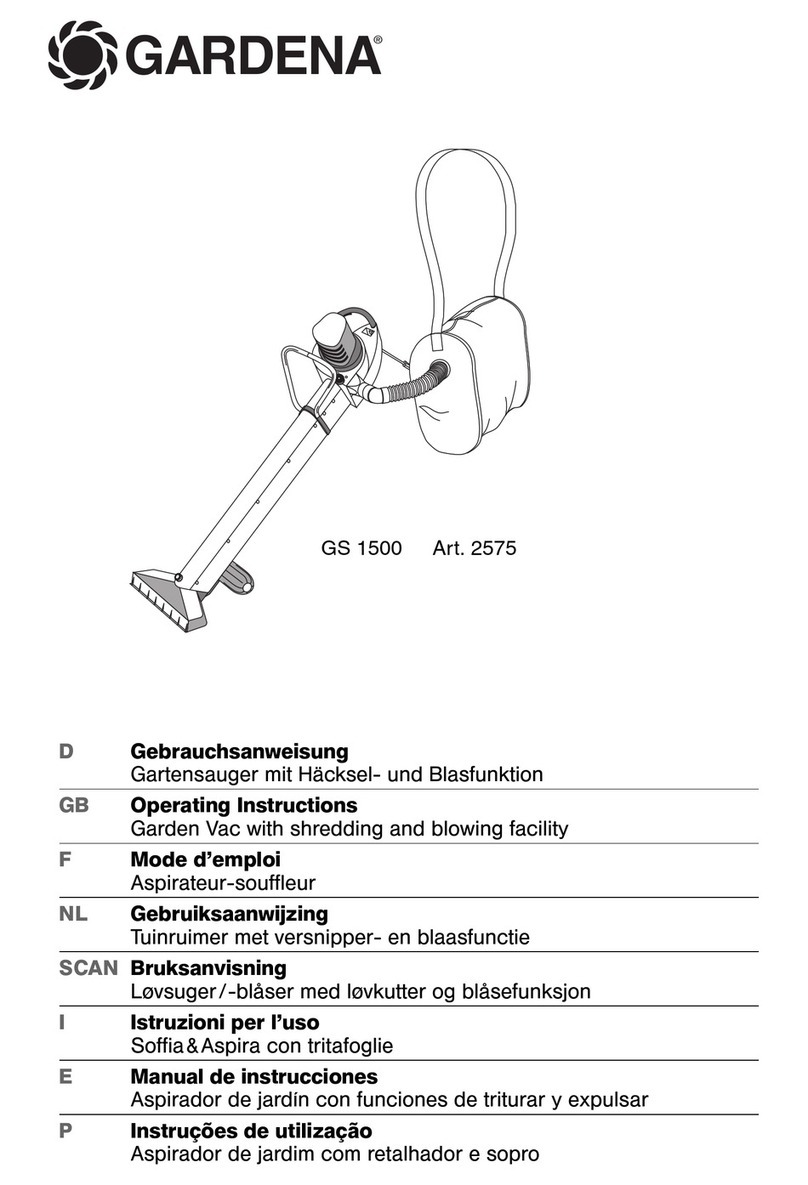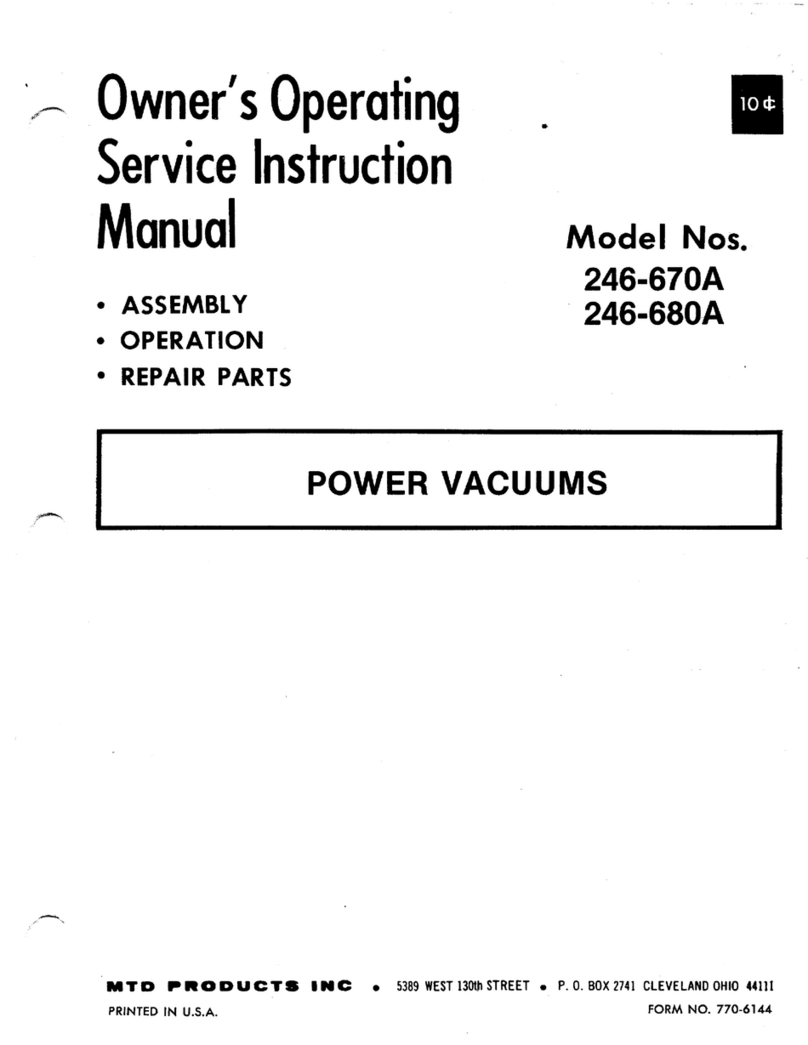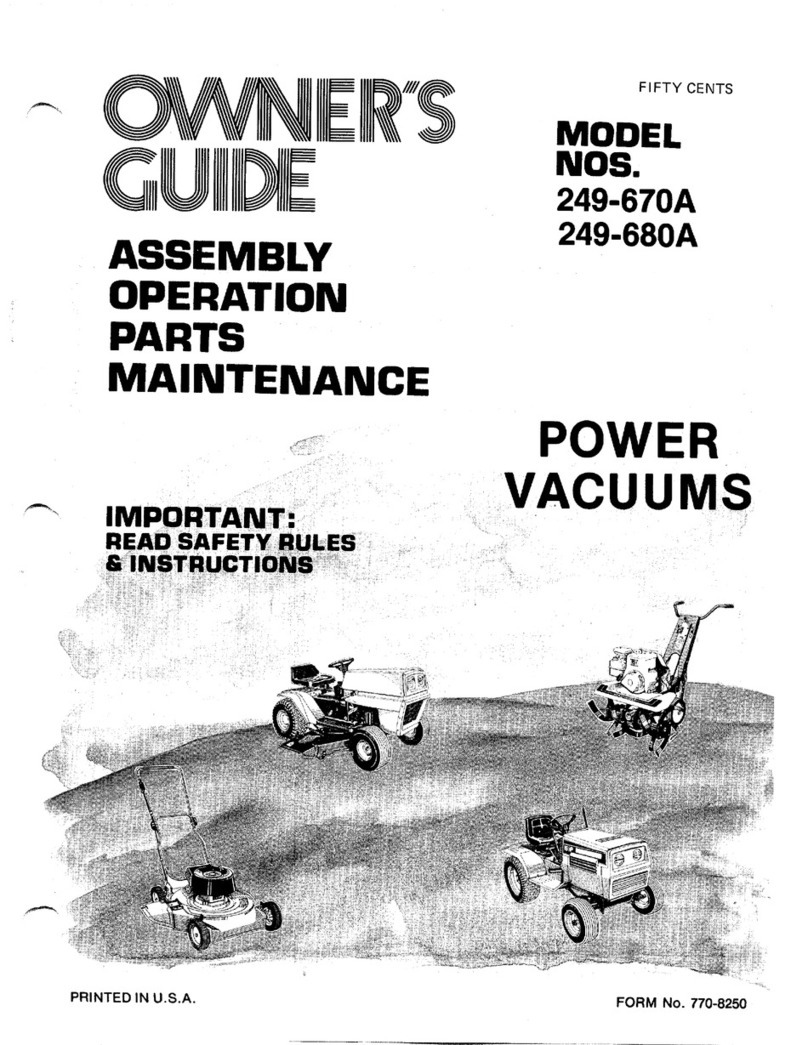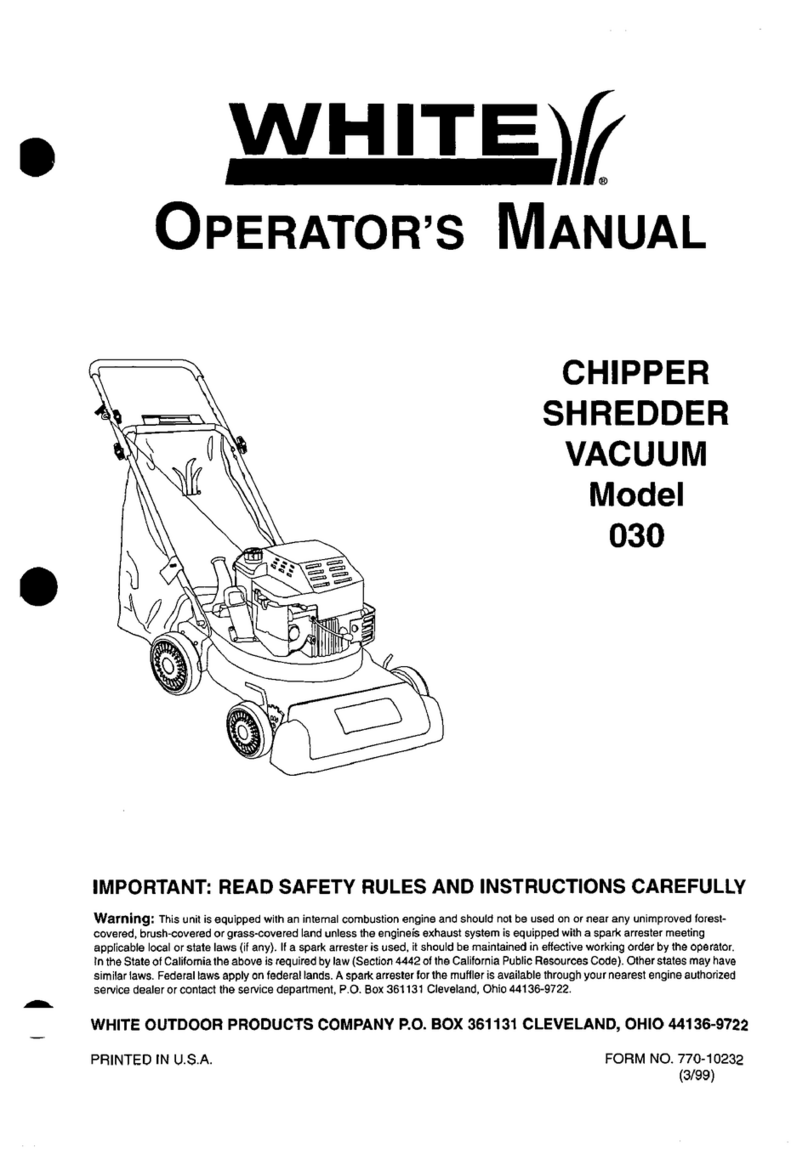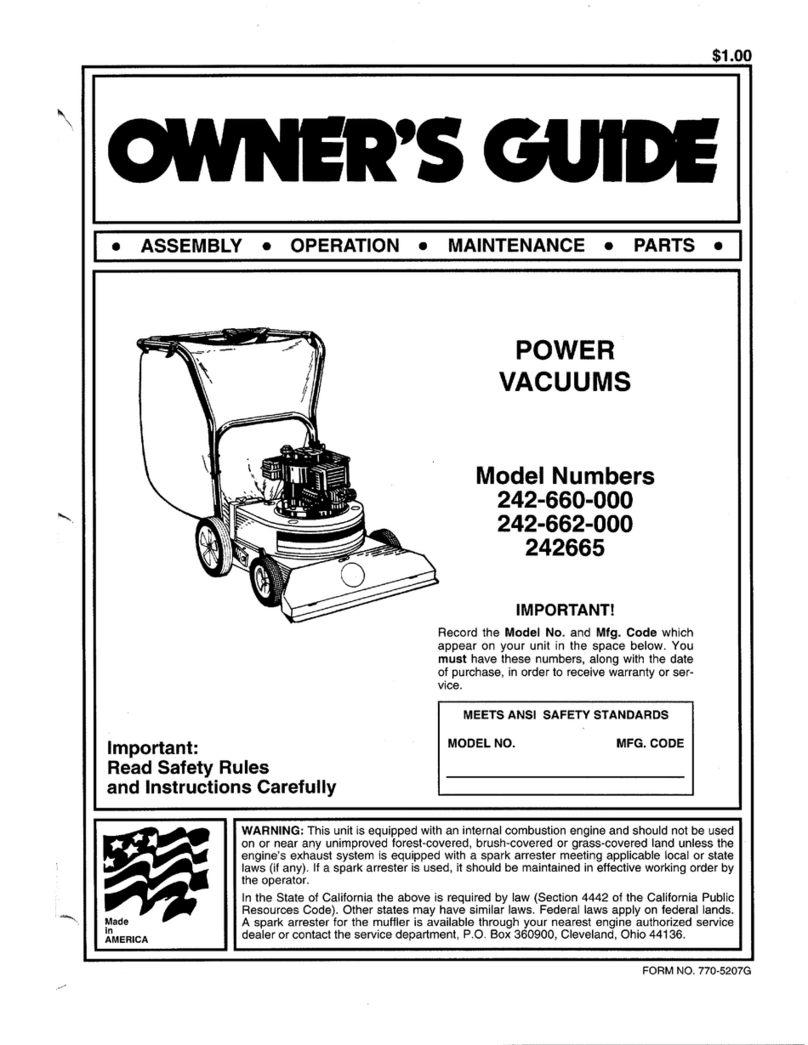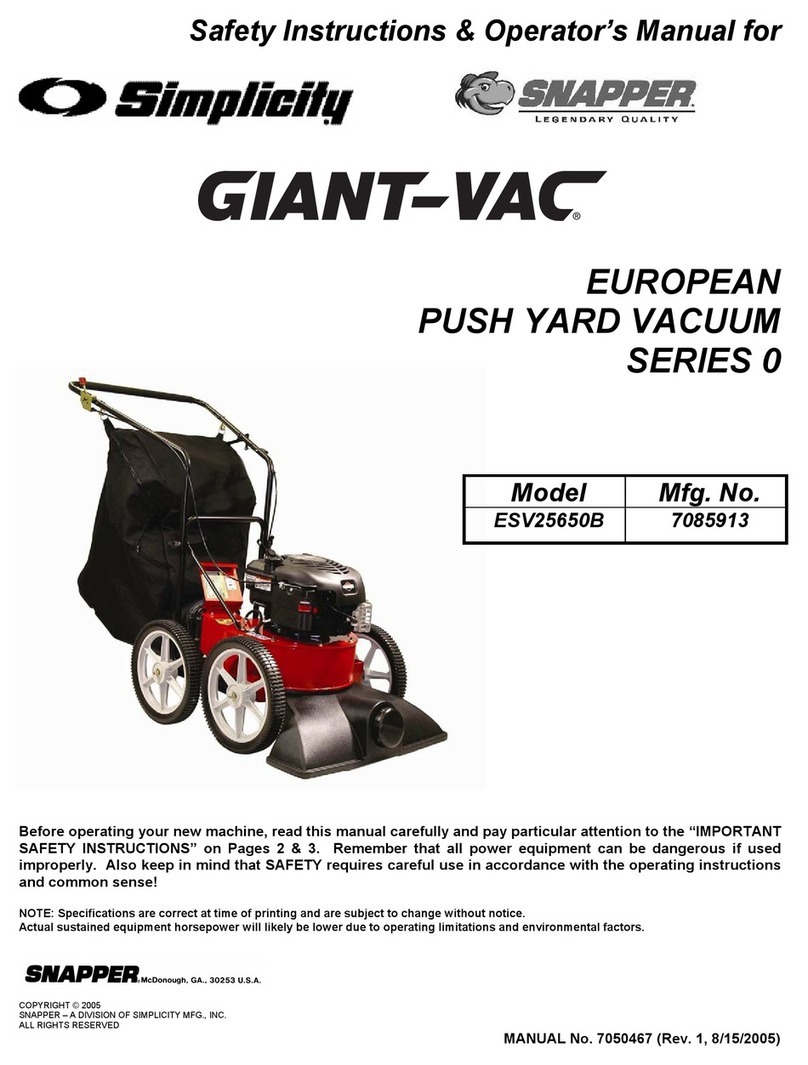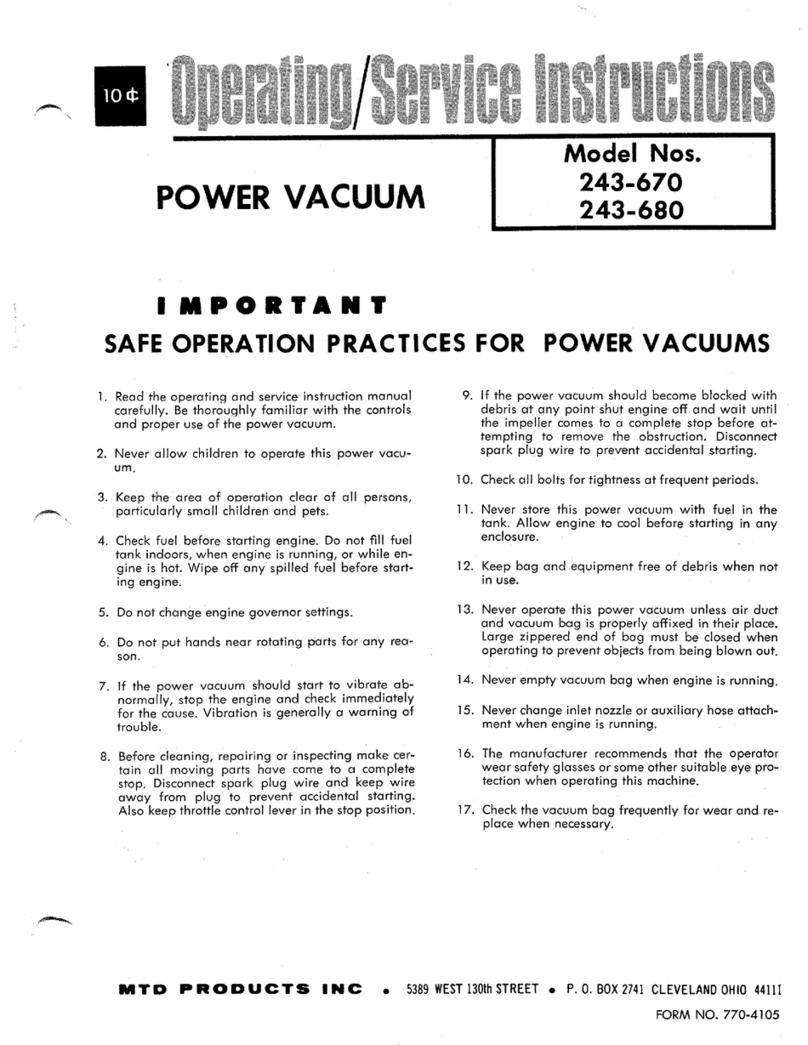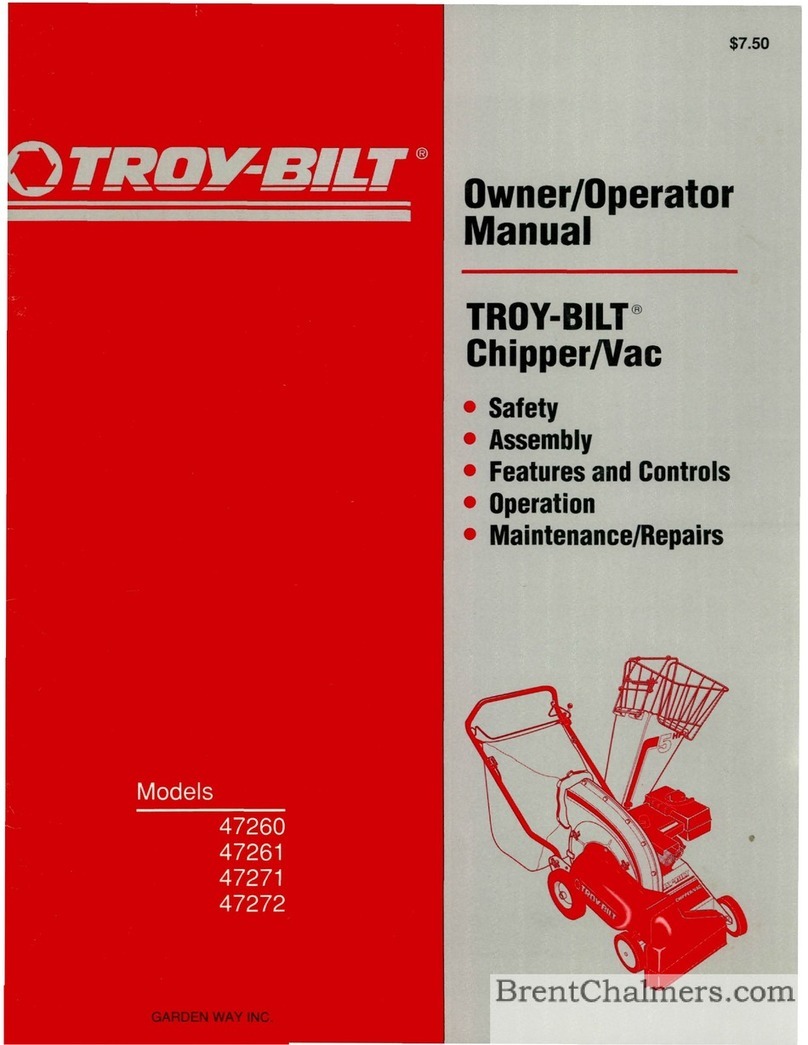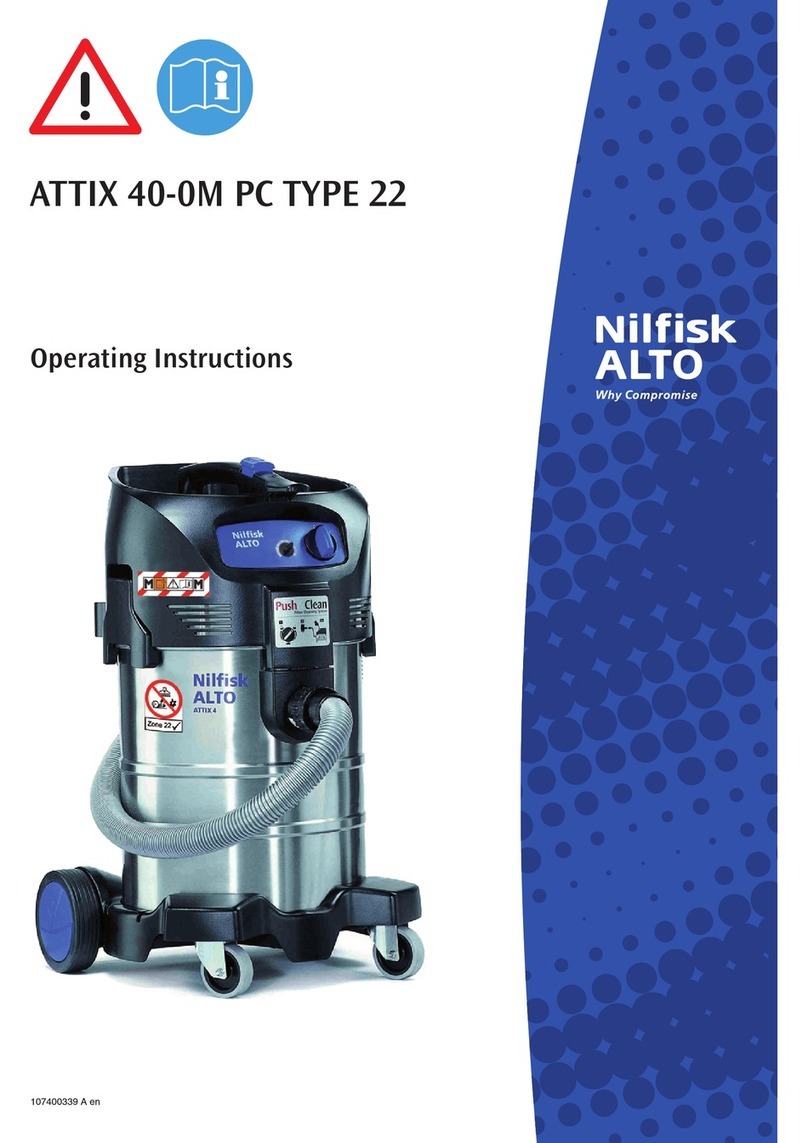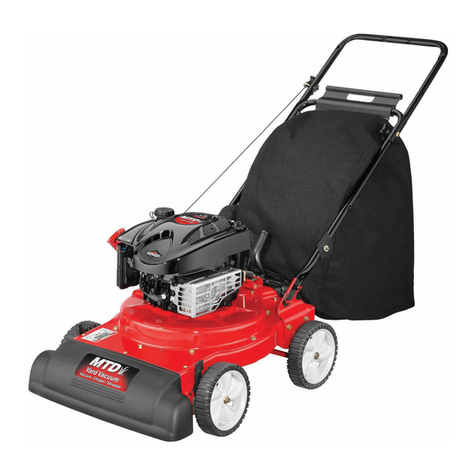
4
Section 2
If the operator(s) or mechanic(s) cannot read6.
English, it is the owner's responsibility to explain this
material to them.
DO NOT wear loose fitting clothing. Loose clothing,7.
jewelry or long hair could get tangled in moving
parts. Do not operate the machine wearing shorts;
always wear adequate protective clothing including
long pants. Wearing safety glasses, safety shoes and
a helmet is advisable and is required by some local
ordinances and insurance regulations.
WARNING
Always wear hearing protection. Operating this
machine over prolonged periods of time can
cause loss of hearing.
Keep the machine and attachments in good8.
operating condition. Keep all shields and safety
devices in place. If a shield, safety device or decal
is defective or damaged, repair or replace it before
operating the machine.
Thoroughly inspect the area where the equipment is9.
to be used and remove all foreign objects.
Fuel is flammable; handle it with care. Fill the fuel10.
tank outdoors. Never fill it indoors. Use a funnel or
spout to prevent spillage. Clean up any spillage
before starting the engine.
DO NOT add fuel to a running or hot engine. Allow11.
the engine to cool for several minutes before adding
fuel. Never fuel indoors or inside enclosed trailers.
If fuel is spilled, do not attempt to start the engine12.
but move the machine away from the area of spillage
and avoid creating any source of ignition until the
fuel vapors have disappeared.
See Section 5.3 ENGINE FUEL SYSTEM for fueling13.
procedure.
Keep flammable objects (cigarettes, matches, etc.),14.
open flames and sparks away from the fuel tank and
fuel container. Use only approved containers.
Do not operate without the debris bag installed.15.
Check the debris bag and components frequently for16.
signs of wear or deterioration and replace as needed
to prevent injury from thrown objects going through
weak or torn spots.
Never attempt to make any adjustments while the17.
engine is running unless specifically recommended
by the manufacturer.
Check the engine mounting bolts at frequent18.
intervals for proper tightness.
OPERATION CONSIDERATIONS2.4
Know the function of all controls and how to stop1.
quickly in case of an emergency.
Do not carry passengers.2.
Do not overload the machine by attempting to chip3.
or shred any material beyond the manufacturer's
recommendation.
Do not operate on slopes if you are uneasy or4.
uncertain. Ultimate responsibility for safe operation
on slopes rests with the operator.
Exercise extreme caution when operating on slopes.5.
Keep all movements slow and gradual. Be sure of
your footing.
Do not turn on slopes unless absolutely necessary.6.
Turn slowly and downhill when possible.
Do not operate on steep slopes. Poor footing could7.
cause a slip and fall accident.
When using this machine, never direct the material8.
being collected toward bystanders or allow anyone
near the machine while in operation.
Do not operate around cars, windows, or other items9.
which could be injured or damaged by blown debris.
Before attempting to start the engine, inspect the10.
machine, debris bag, shields and safety devices
for any damage. Correct any problems before
operating.
If the vacuum ever plugs, shut off the engine, and11.
wait for all movement to stop before removing the
obstruction.
WARNING
DO NOT use your hand to dislodge the clogged
material. Use a stick or other device to remove
clogged material after the engine has stopped
running and the vacuum fan has stopped
turning.
Stop the engine when crossing gravel drives.12.
If the machine begins to vibrate abnormally, shut the13.
machine off immediately. Inspect the machine and
have repairs made before restarting.

